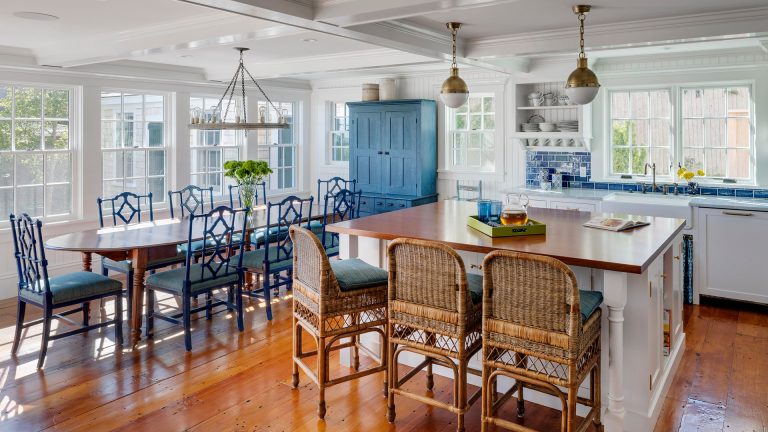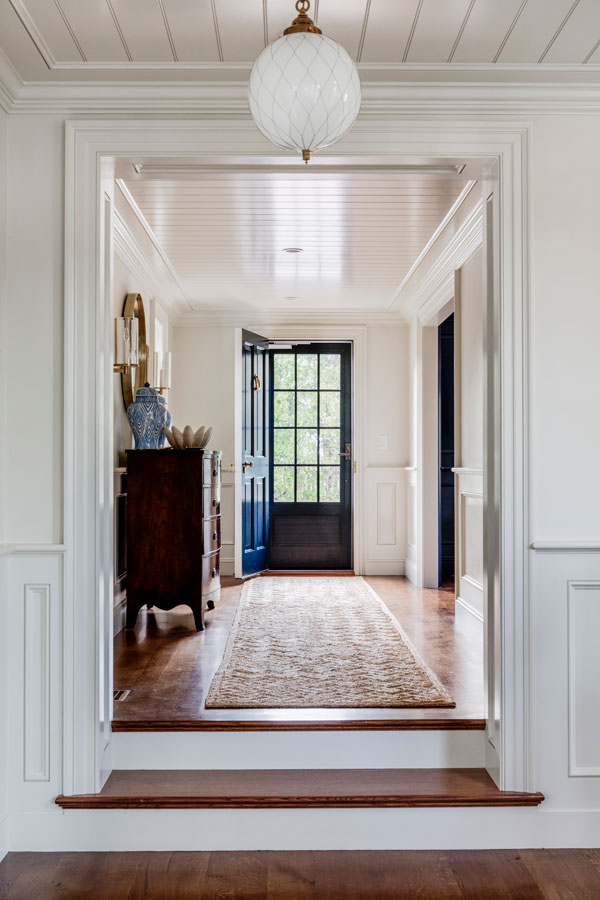
Raising the Bar on Lower Ceilings
Historically, and especially here in New England, there’s a true evolution of ceiling height. In antique homes of the 1700s, ceilings were typically just 7′ tall. Low ceilings and small rooms in these homes were designed so they could be easily heated by a central fireplace. As heating systems and insulation improved, the height of the ceiling rose to the point where, today, depending on a home’s style, ceilings may be 9′ high, 10′ or more. Within older homes with 8′ ceilings or less there’s plenty of warmth and character, and there are architectural choices that can be made to make those spaces seem more voluminous than they actually are.


Our approach to lower ceilings
First and foremost, ceiling height can not be considered in a vacuum—it all comes down to scale. In a traditional cape-style home, there is usually a real opportunity to vault the ceiling in the main living area, and then build wings onto the sides of the house, stretching the program horizontally instead of vertically. In those cases, dormers can be used as clerestory windows across the back of the house to fill the newly opened interior space with light. Vaulted ceilings can continue into new-construction wings for a cohesive composition. In essence, we consider removing the original 2nd story to create volume within the original structure, preserving a charming exterior while also achieving the interior a client desires.


Lowering floor joists to gain interior height
Another way to capture additional height is to step down the floor joists. Once again in this execution, the exterior of the structure can be preserved while interior volume can be found. From the outside, once the work is complete and the ceiling is “higher,” the home will read just as it did before. This tactic is especially effective when clients want to preserve the look of the home from the street. In Patrick’s own home, lowered floor joists achieved more significant volume within a 1930’s Royal Barry Wills property that originally featured 7’3” ceilings.

Maximizing the appearance of height with architectural trim
Many homes, especially those that are premium new construction, feature architectural detailing on the ceiling to establish character, including exposed reclaimed beams or timbers along with crown molding. On a lower ceiling, that treatment can still be effectively used, but with a change to accommodate the lower interior height. In older homes, reducing the depth of the beam or timber allows for a similar result. On an 8′ ceiling, a beam should be no deeper than 6″, and cased with smaller crown so only 3″ of the beam is actually expressed. When visitors experience that ceiling, the molding is in view, with the bottom of the beam at 7’6″ and the top of the ceiling at 8′. This treatment gives a wonderful rhythm walking through the home, where the ceiling is giving the articulation, not the walls.

In homes with the lowest ceilings ignore the plane
In homes with ceilings that are 7’6” or lower, the plane should not be articulated at all. In those scenarios the goal is to ghost out the ceiling to essentially make it disappear. Instead, focus on placing architectural trim and features including millwork, a fireplace, built-in bookcases or windows looking out to a view on the walls to draw the eye away from the ceiling completely.
Furnishings and lighting become very important in residences with the lowest ceilings as well. Larger furniture will make the spaces seem small, while smaller-scaled pieces will give the illusion of more volume. In terms of lighting these homes, we recommend wall sconces and table lamps instead of recessed lights, two choices that move your eye away from the ceiling plane.

Is your lower ceiling getting you down? Contact us to learn how we might approach the project. In the interim, we invite you to find meaningful inspiration in our portfolio.